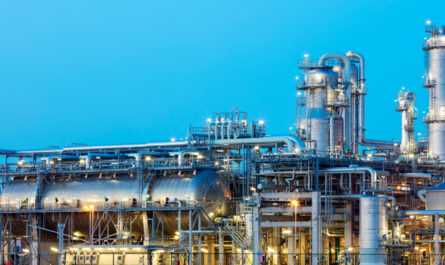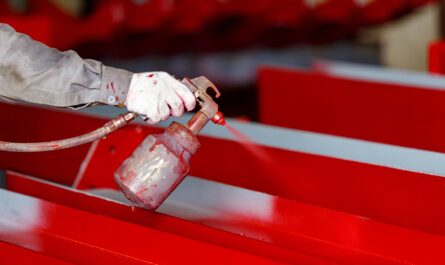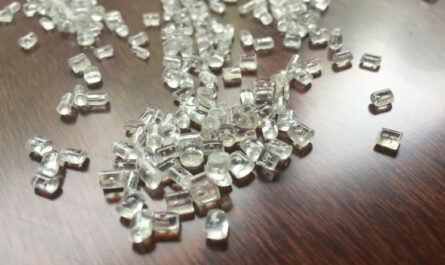Polyvinylidene fluoride (PVDF) is a synthetic fluoropolymer that has been gaining attention due to its unique properties and increasing applications. In this article, we will explore PVDF in detail – from its chemical structure and properties to its wide range of uses.
Chemical Structure and Composition
PVDF is a linear fluoropolymer with the chemical formula (CH2−CF2)n. It consists of repeating units of vinylidene difluoride monomer connected together. The presence of strongly electronegative fluorine atoms gives PVDF its robust chemical and thermal stability. Around 65-75% of the hydrogen atoms in PVDF are replaced with fluorine, making it one of the most fluorinated commercially produced polymers.
This high fluorine content gives PVDF several distinguishing characteristics. At the molecular level, the carbon-fluorine bond is one of the strongest single bonds found in organic chemistry. The partial electronic charge on the fluorine modifies the electronic properties and increases the energy level of the highest occupied molecular orbital. These factors contribute to PVDF’s resistance to corrosion and weathering.
Mechanical and Thermal Properties
Polyvinylidene Fluoride demonstrates excellent mechanical properties. It has a high tensile strength of around 48-72 MPa, with an elongation at break of 30-60%. PVDF is also very impact-resistant with an Izod impact strength of 13-41 kJ/m2. These properties allow PVDF to withstand high stresses and impacts without breaking.
Thermally, PVDF is extremely stable and can operate continuously at temperatures up to 150°C. Its melting temperature ranges from 150-180°C depending on the specific grade. PVDF also exhibits very low flammability due to the presence of fluorine. Its limited combustibility and self-extinguishing properties make it a safe material to use.
Processing and Fabrication
Unlike most plastics, PVDF can be melt processed as well as dissolved and deposited from solution. Common melt processing techniques include extrusion and injection molding. This allows PVDF to be easily fabricated into various profiles, films, tubes, pipes and other shapes.
PVDF can also be dissolved in polar organic solvents like DMF and acetone, then cast as thin films or coatings through methods such as dip coating and spin coating. The solution processability enables depositions of PVDF onto difficult geometries and lightweight substrates.
Applications of PVDF
Due to its robust characteristics, PVDF finds numerous applications where reliability and durability are important. Some key uses of PVDF are:
Membranes and Linings: PVDF membranes are used extensively for microfiltration, ultrafiltration and reverse osmosis processes in water treatment. PVDF linings provide corrosion resistance in chemical storage, pipes and valves.
Wire and Cable Coatings: The strength and flexibility of PVDF make it suitable for wire and cable insulation coatings. It protects against abrasion, chemicals and moisture.
Architectural Profiles: PVDF coatings on metal give long-lasting finishes for roofing, cladding and rainscreen systems. The colorfastness of PVDF allows vibrant colors.
Medical Devices: PVDF is approved for use in medical implants, tubing, and components due to its biocompatibility and non-toxicity.
Photovoltaics: The transparency, flexibility and weather resistance of PVDF enable its usage as encapsulants and backsheets for solar cells.
Other Applications: PVDF is also used as a binder in lithium-ion batteries, 3D printing filament, specialty membranes and transducers requiring piezoelectricity.
Environmental Benefits
Being a highly fluorinated plastic, one may think PVDF poses environmental concerns. However, PVDF presents several eco-friendly advantages when compared to other fluoropolymers and plastics:
– PVDF does not produce harmful by-products during combustion as the carbon-fluorine bonds are extremely stable.
– It is recyclable at high temperatures through processes like solvolysis which can recover over 80% of the monomers.
– PVDF provides durable solutions which last longer, reducing waste generation over time compared to short-lived traditional plastics.
– Being chemically inert, PVDF products do not leach harmful additives into the environment during use.
Owing to the chemical structure endowed by fluorine, PVDF exhibits unique properties that make it suitable for numerous industrial applications. Its versatility in processing along with mechanical, thermal and chemical robustness continue to drive PVDF adoption. With improving recycling technologies, PVDF is proving to be not just high-performing but also environmentally preferable for the future of sustainable plastics. As applications expand into new domains, PVDF is poised to cement its position as an essential engineering polymer.
*Note:
1. Source: Coherent Market Insights, Public sources, Desk research
2. We have leveraged AI tools to mine information and compile it




